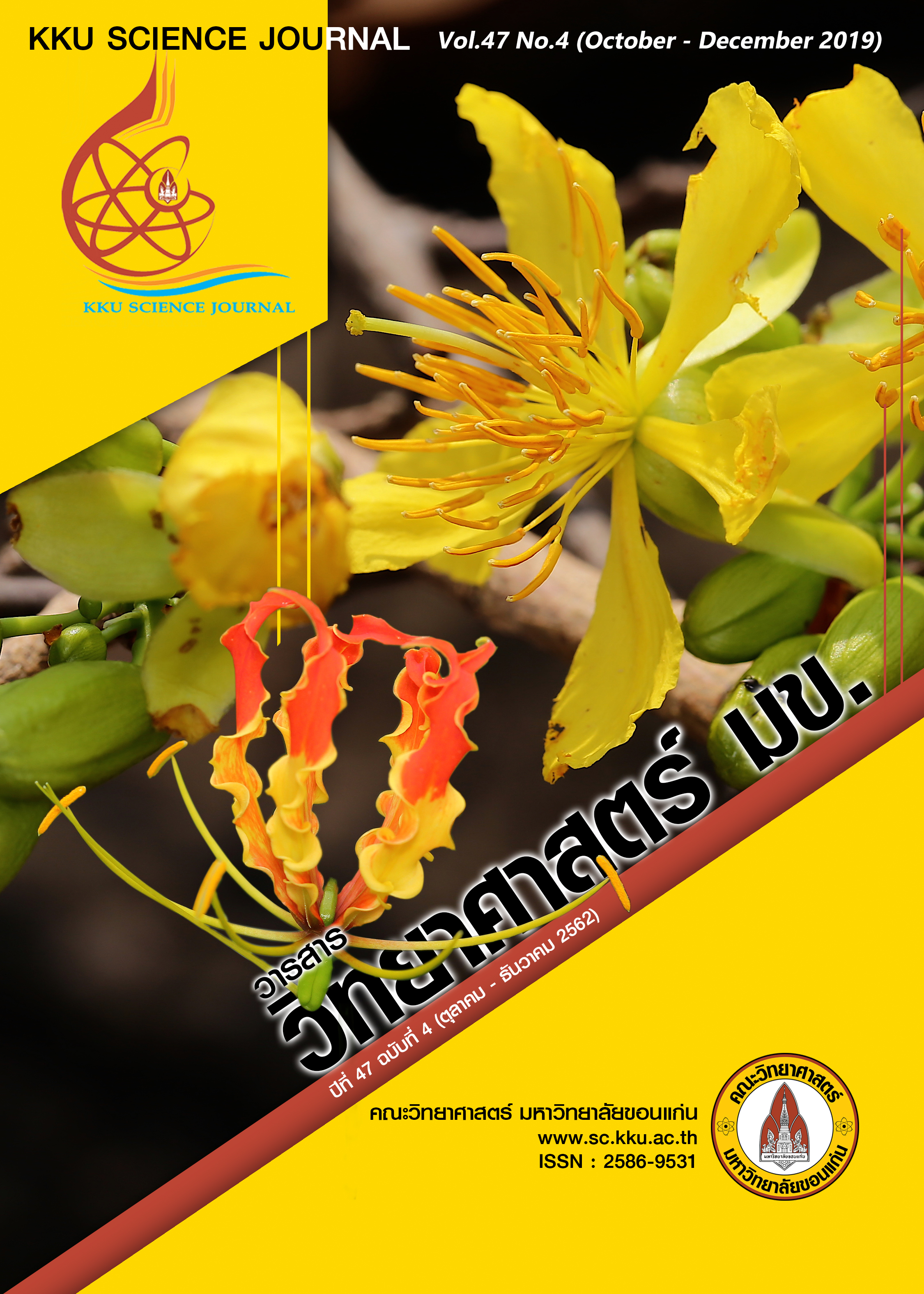Fabricating CH3NH3Pb(SCN)2I Thin Film for Light Absorption in Hole Transporting Layer-Free Perovskite Solar Cells
Main Article Content
Abstract
CH3NH3Pb(SCN)2I (MAPb(SCN)2I) perovskite thin films were fabricated by the Sequential Dip-Coating method on the titanium dioxide (TiO2) surface. This process consists of two steps; first step, the thin Pb(SCN)2 films were coated on the TiO2 films using five different Pb(SCN)2 concentrations (0.5 M, 1.0 M, 1.5 M, 2.0 M, 2.5 M, and 3.0 M), and the second step, the Pb(SCN)2 films were dipped into the MAI solution for 2 mins. The surface morphology of MAPb(SCN)2I films composes of the large polygon shape, and the films become more continuous with the increasing Pb(SCN)2 concentration. The hole-transport-layer (HTL) free MAPb(SCN)2I perovskite solar cells were assembled and tested. The carbon-based HTL-free MAPb(SCN)2I perovskite solar cells prepared from the 1 M Pb(SCN)2 film give the highest solar cell efficiency of 4.22%. This is because the MAPb(SCN)2I film prepared from the 1 M Pb(SCN)2 concentration has a relatively completed perovskite formation and the perovskite film almost covers the TiO2 surface.
Article Details

This work is licensed under a Creative Commons Attribution-NonCommercial-NoDerivatives 4.0 International License.


